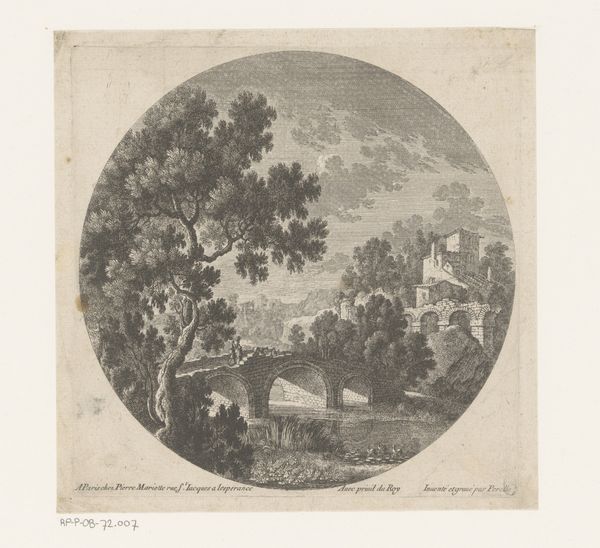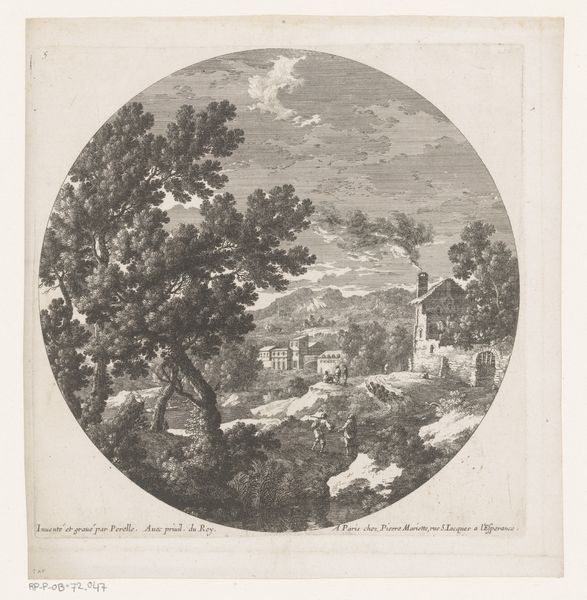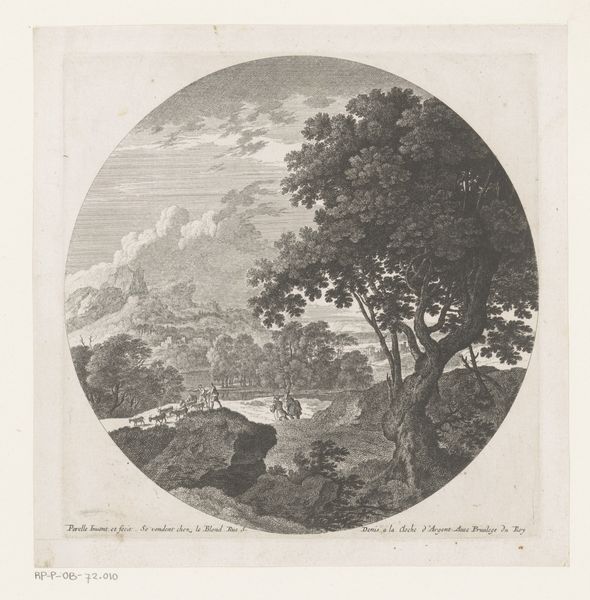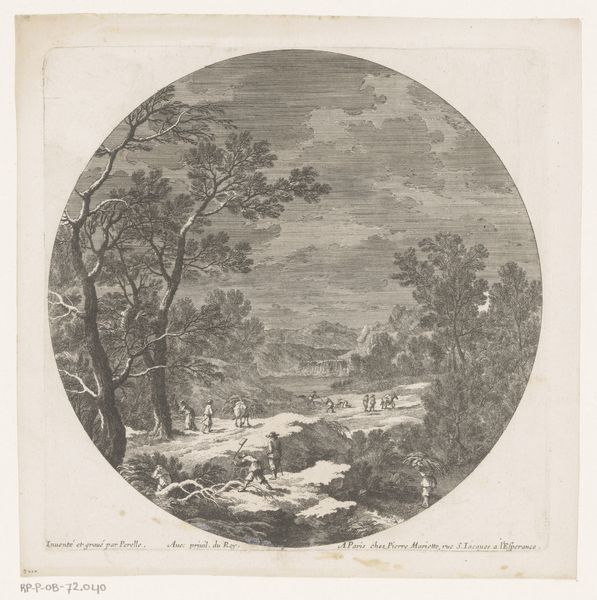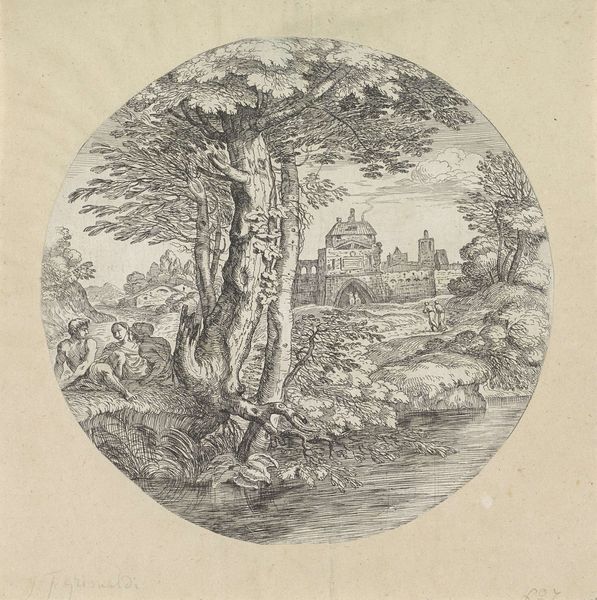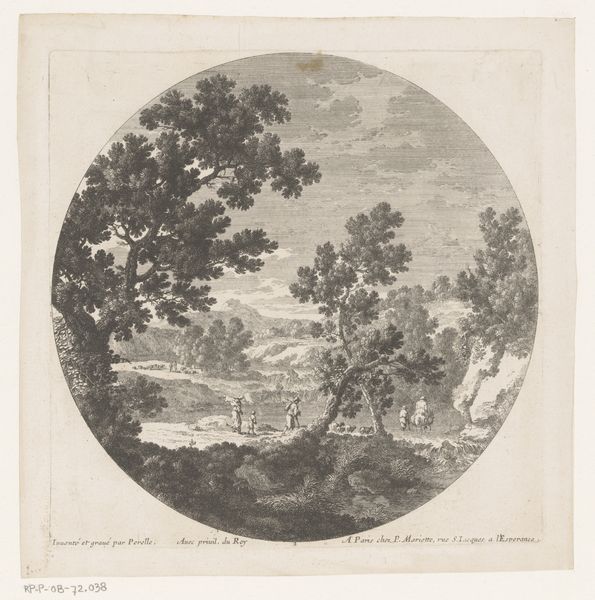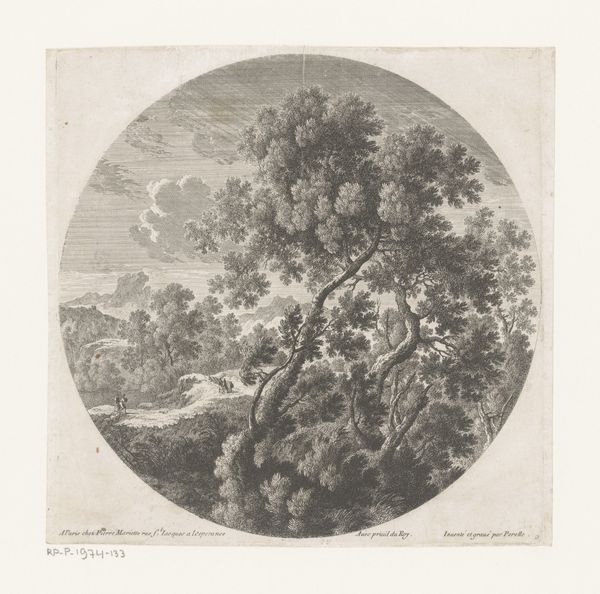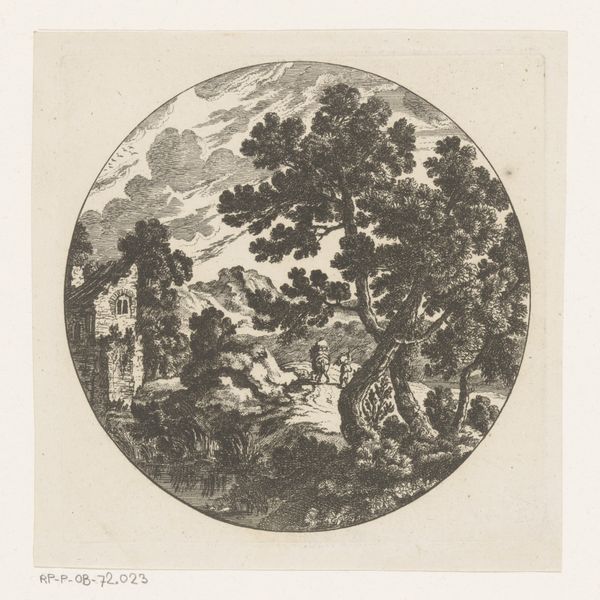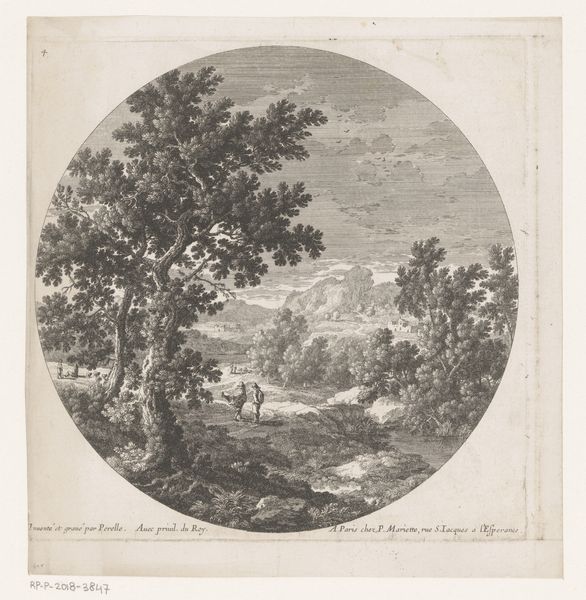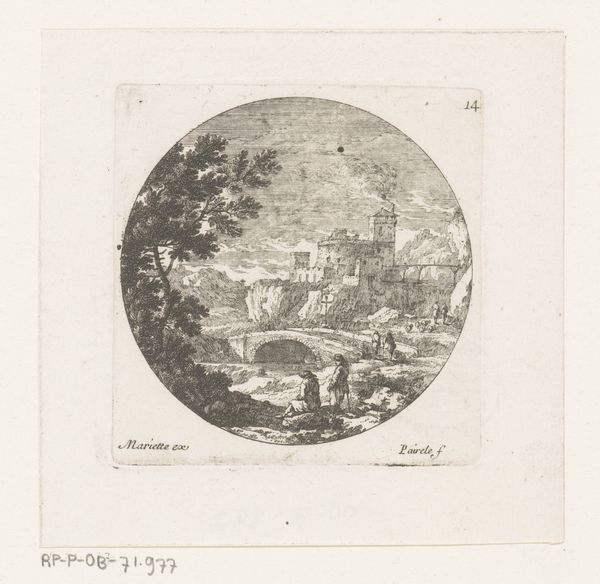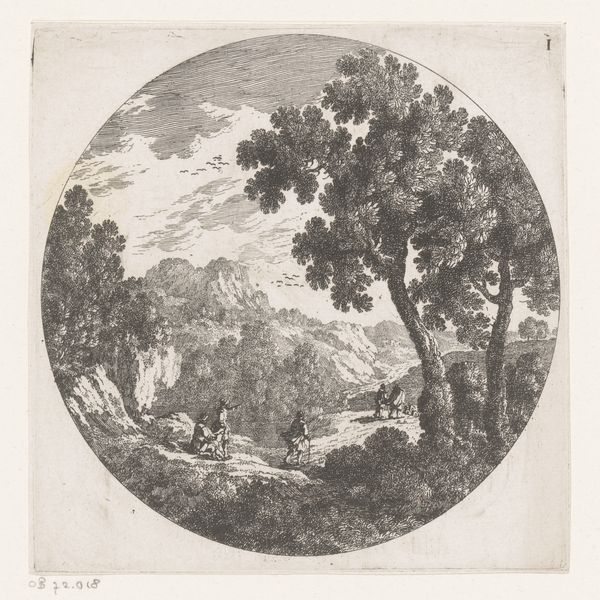
print, engraving
#
baroque
# print
#
landscape
#
figuration
#
line
#
history-painting
#
engraving
Dimensions: height 132 mm, width 131 mm
Copyright: Rijks Museum: Open Domain
Curator: Here we have “Landscape with Figures and Bridge,” a print made by Nicolas Perelle, dating sometime between 1613 and 1695. It's a lovely example of the Baroque style as rendered through engraving. Editor: It feels a little melancholic, doesn't it? The way the light is hitting the bridge, almost cinematic. And the circular composition kind of focuses everything inward. Curator: Absolutely. Consider the public to whom these kinds of prints were marketed. During that period, landscape prints satisfied a craving among a growing urban population for images that represented the peace of rural life. Note how Perelle uses the line work to simulate different textures and depth in the engraving. Editor: But even in this supposed idyll, you have figures crossing, going somewhere. Who are they, and why are they heading into or out of this idealized space? Do you think the burgeoning urban populations longed for an inaccessible idealized world? Curator: Perhaps. What’s interesting to consider too, is how the art market commodified these kinds of idyllic yearnings for popular consumption. It offered a simulation, carefully constructed and sold. Editor: Simulation, yes. What interests me is considering who was allowed access into this space represented in the image and whose labor was obfuscated by this emphasis on peace? Like, were enslaved people envisioned within this rural ideal? How does it function ideologically? Curator: That’s astute, I think the almost dreamlike roundel might well invite us to read into it our own meanings depending on our historical moment. These were mass-produced images and so perhaps a certain element of the personal interpretation was almost inevitable. Editor: Exactly. Maybe the peace is, at best, conditional. I'm drawn to the contrasts, the bridge implying transition. The looming clouds perhaps. All point to social stratification within rural communities, issues around land use. So perhaps our interpretation allows for something less idealized? Curator: Yes, very much so. I'm interested in what you say. I'm now drawn to reconsider the figures and where they might be heading as you note. Thanks for this interesting re-evaluation. Editor: It’s important to consider. Thank you for offering the historic background for this work, which provides helpful frameworks for my analysis.
Comments
No comments
Be the first to comment and join the conversation on the ultimate creative platform.


